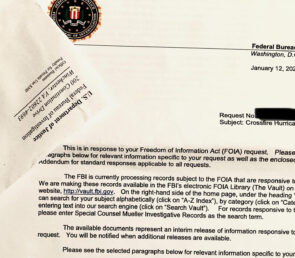
The digital normalization of Narcissistic Personality Disorder (NPD)
Date : February 8, 2024 By
Amid the digital normalization of Narcissistic Personality Disorder (NPD) characteristics in society, a scholarly imperative emerges for communications and mental health professionals to discern and address its profound implications on individual and collective well-being. The swift societal adjustment to NPD personality traits hinders the usual detection process. This adaptation masks the detection of underlying psychobiological and developmental dysfunctions in the brain that produce symptoms of a bona fide psychological disorder, defined as a “clinically significant disturbance in an individual’s cognition, emotion regulation, or behavior” (Spielman et al., 2020, p. 538). Further, narcissistic personality traits are both augmented by and augment further algorithmic environmental disorder, linking narcissism to the spread of disinformation (Ahmed & Rasul, 2023). Digital psychological manipulation traps users into detrimental face-saving patterns that hinder observational autonomy, creating an environment conducive to NPD.
Continuously evolving, the American Psychiatric Association’s (2022) Diagnostic and Statistical Manual of Mental Disorders (DSM-5-TR) provides clinicians with standardized criteria for diagnosing individual psychological disorders and can also help identify groupings of systemic personality traits within broader social patterns. The relaxed threshold in the general population for narcissistic tendencies provides subterfuge for more extreme and malignant presentations. Additionally, disinformation manufactures conflict and environmental pressure on genetic expression that may increase NPD prevalence. Philosopher Daniel Dennett decides the solution to parasitic memes is the evolution of relatively benign variants to promote avirulence (Dennett, 2002). However, that avirulence hinges on the body’s ability to recognize the virus.
Director Whannell (2020) portrays the problem of using digital media to disguise psychological manipulation in the movie The Invisible Man, where wealthy optics engineer and CEO Adrian Griffin evades detection despite a spree of violent criminal behavior using a digital cloak of invisibility. His camouflage suit allows him to freely execute a series of harmful plans motivated by criteria associated with NPD as defined in the DSM-5-TR. The depiction of Adrian’s obscured descent into realizing increasingly worse atrocities raises questions about the use of digital information to distort observer reality. The analogy is clear — the cumulative influence of unaccountable anonymous interactions leads to traumatic large-scale ‘black swan’ events. The American Psychiatric Association (2022) provides the following diagnostic criteria — which Adrian exemplifies — as imperative for identifying NPD symptoms as part of a prevalent pattern of grandiosity, craving for admiration, and absence of empathy:
- Adrian’s interpersonally exploitative tendencies manifest through the manipulation and exploitation of his girlfriend Cecilia, using his technological expertise to invisibly torment and manipulate her relationships to isolate her when she attempts to leave him.
- Adrian’s extreme sense of entitlement is apparent as he systematically sabotages Cecilia’s life, tampering with her birth control, drugging her, and stealing her portfolio before a job interview, underscoring his disregard for the autonomy of others.
- Adrian severely lacks empathy, showing no remorse for the emotional and physical trauma he inflicts on others. Exploiting their vulnerability, he relentlessly pursues power without regard for the impact, using people as pawns to control or eliminate.
- Adrian’s arrogant and haughty demeanor, showcased in hubris when he taunts Cecilia, ultimately backfires when his need to claim recognition compromises his identity, leading Cecilia to realize he is the tormentor, not his framed brother.
- Adrian’s pervasive need for control and power is evident throughout the manipulation of Cecilia’s life. His use of advanced technology to control and harm her invisibly, coupled with his apparent belief that he can murder, rape, and abuse people at will without consequence, exemplifies extreme self-importance.
The abuse of digital technology enables the Invisible Man to ruin and destroy lives, including his own. In their work Examining the Association Between Social Media Fatigue, Cognitive Ability, Narcissism, and Misinformation Sharing: Cross-National Evidence from Eight Countries, Ahmed & Rasul (2023) confirm the relationship between the saturation of disinformation in facilitating distortions by users with narcissistic traits. The study reveals the mechanism behind the proliferation of disinformation on social media using the concept of social media fatigue (SMF) and its potential impact on users’ belief in and dissemination of disinformation. The research draws from survey evidence across eight countries, linking a positive association between SMF and disinformation belief and sharing, uncovering a noteworthy trend: Individuals with high cognitive ability exhibit less susceptibility to sharing disinformation due to SMF than those with low cognitive ability who exhibit narcissistic traits.
This evidence urges a deeper examination of the symbiotic relationship between cognitive ability and narcissism in disinformation engagement, offering valuable insights for policymakers and academics striving to mitigate the harmful repercussions of disinformation. Ahmed and Rasul (2023) reveal trends that ultimately link logic schemas in evaluating information as key to restoring coherence in the digital sphere. Additionally, transparency in information allows users to make appropriately informed choices and alleviate SMF. The adoption of hashed user signatures provides the privacy and transparency required to establish this data provenance (Shaw, 2022), effectively reducing the information disorder associated with the narcissistic sharing of disinformation, which obscures clinical presentations of NPD.
References
Ahmed, S., & Rasul, M. E. (2023). Examining the association between social media fatigue, cognitive ability, narcissism and misinformation sharing: cross-national evidence from eight countries. Scientific Reports, 13(1), 15416.
American Psychiatric Association. (2022). Diagnostic and Statistical Manual of Mental Disorders (5th ed., text rev.). American Psychiatric Association. https://doi.org/10.1176/appi.books.9780890425787
Dennett, D. (2002, February). Dangerous memes [Video]. TED Conferences.
https://www.ted.com/talks/dan_dennett_dangerous_memes?language=en
Spielman, R. M., Jenkins, W. J., & Lovett, M. D. (2020, April 22). Psychology 2e. OpenStax. Retrieved October 9, 2022, from https://openstax.org/books/psychology-2e/pages/1-introduction
Shaw, C. (2022). sha3.org – Connect the Web. Crystal Shaw. https://www.sha3.org
Whannell, L. (2020). The Invisible Man. Universal Pictures.

A Summa Cum Laude graduate (4.0 GPA) of Purdue Global University with a baccalaureate in the Science of Communications, my multidisciplinary experience ranges from journalism to marketing and web development. I presented my work on hashed usernames for privacy and transparency in aggregate data at a special session on data provenance at the NSA’s Symposium on the Science of Security.
https://buymeacoffee.com/crystalgonzalez
https://cash.app/$crystalgonzalez0




